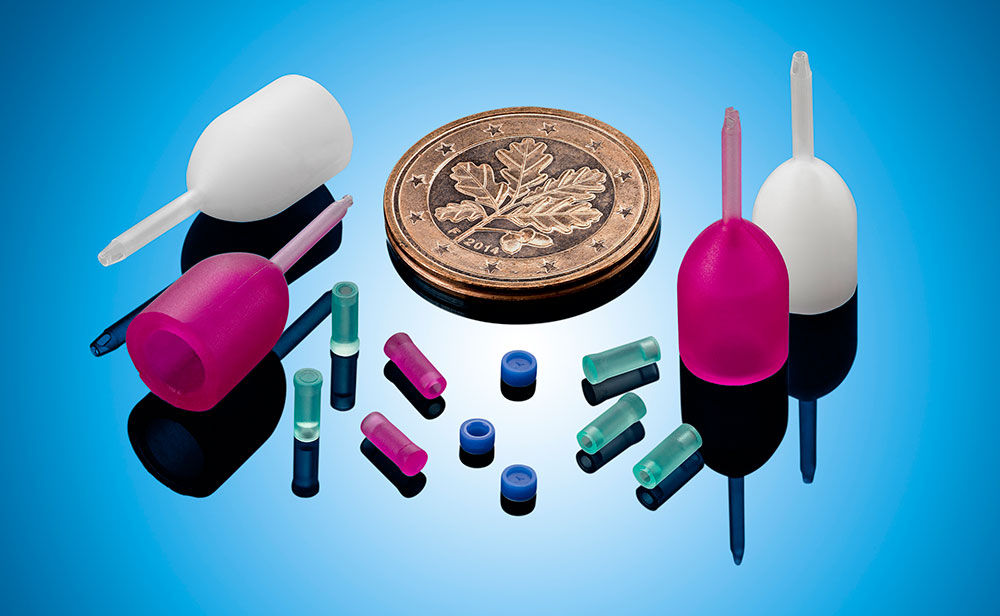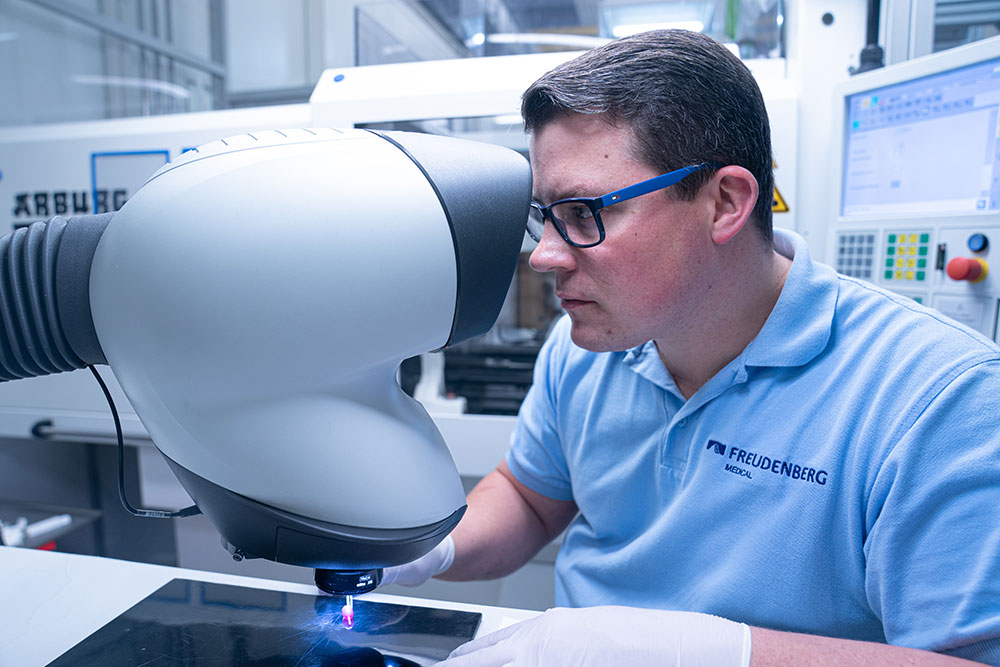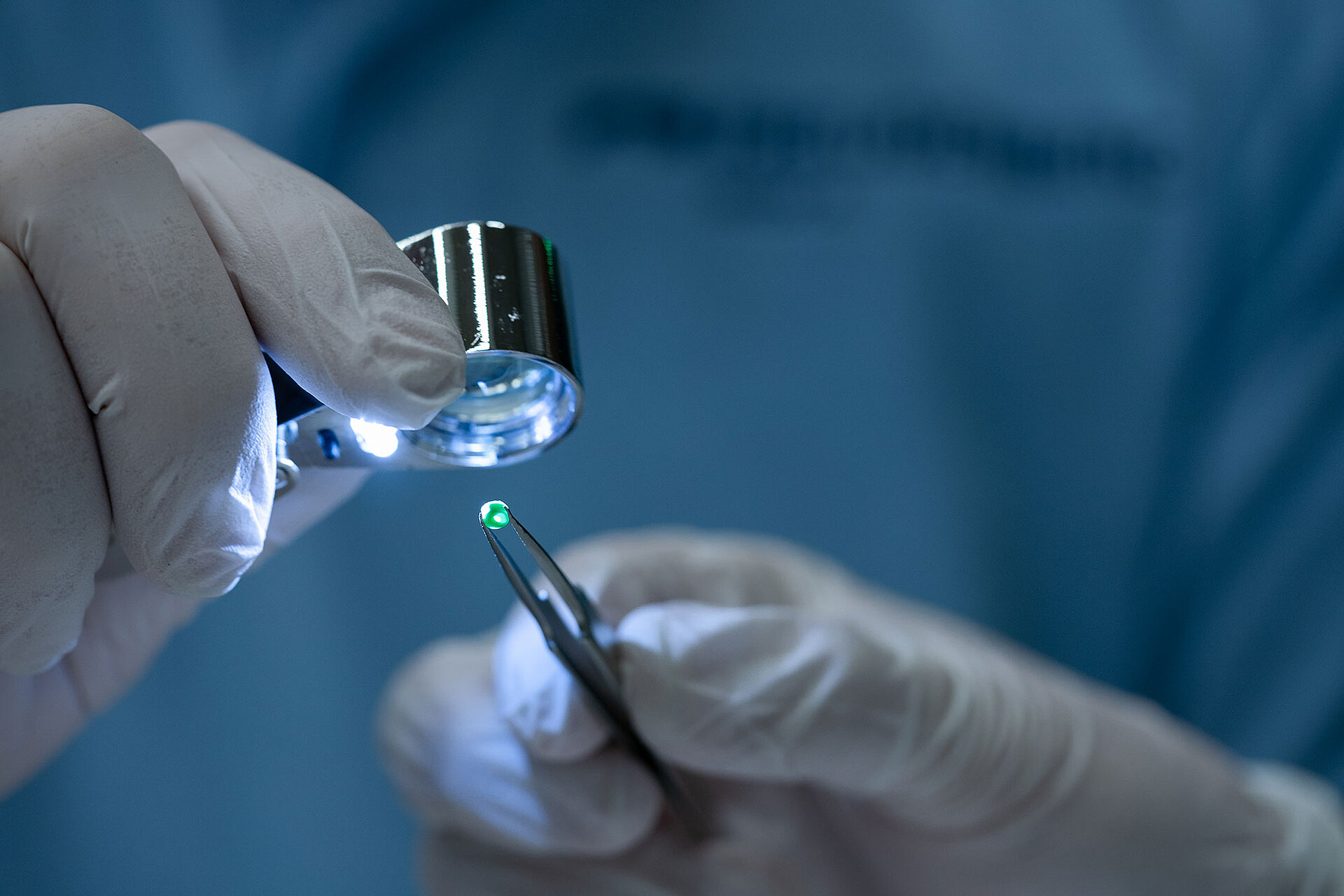Lifting the veil
Freudenberg Medical’s precision components for cataract surgery
Cataracts are one of the most common eye diseases and must be treated with surgery. Some 600,000 operations are performed in Germany each year and 14 million worldwide. The surgery can restore 50 to 100 percent of a patient's vision. When operating on eyes, doctors need instruments with high-precision silicone molded parts just a few millimeters in size. The Freudenberg Business Group, Freudenberg Medical, uses modern medical technology to develop and manufacture these tiny silicone parts at their Kaiserslautern site in Germany.
Together with customers, Freudenberg Medical develops small silicone molds for various ophthalmological applications. The technology group’s Business Group manufactures molded parts from liquid silicone using an innovative injection molding process – this modern production technology provides maximum precision and accuracy. Freudenberg Medical specializes in such high-precision micro-parts, combining material expertise with manufacturing know-how to meet the high standards that eye-surgery components demand.

Cataract products: Silicone products for ophthalmic surgery demand maximum precision in the smallest spaces.
Freudenberg Medical offers customers numerous eye-surgery products. “We specialize in high-precision silicone products. Therefore, our manufacturing technologies are focused on complex applications,” says Markus Bardian, product developer of silicone components. “Customers benefit from our skills in other areas as well – we are also experts for cardiovascular surgery and implants.” Talking at an early stage with development partners, customers and suppliers is vital to a successful innovation project.
"Product development begins with customers, their ideas and specifications for what they want to develop with us,” says Bardian. “The customer’s needs and ideas flow into product development from the start.” Once a goal is defined, Freudenberg Medical develops a concept to bring together a suitable material with an optimal process technology.
How do cataracts form? The disease, occurs mostly in older people, gradually clouding the lens of the eye, leaving patients with clouded vision. The lens will slowly turn gray if left untreated. "Routine activities such as driving or reading become more difficult for those suffering from the disease. Suddenly, even watching TV requires is a chore,” says Wolfgang Scholten. The 71-year-old had cataracts in both eyes and was operated on twice. After surgery, his daily life saw a big improvement: He is now less sensitive to glare in bright sunlight or flash. Once again, he can read or watch TV – his depth perception has improved, and he can now drive again. A veil has lifted from his world thanks to the Freudenberg Group’s modern medical technology.

Visual quality inspection: Markus Bardian, Product Developer at Freudenberg Medical, uses a microscope to inspect the finished precision part.
Very small and precise: Instruments for eye surgery
Ophthalmological surgeons use high-precision instruments in the procedure. Such ophthalmology instruments are very small and must be precise, presenting a challenge to production. The tolerances in the silicone product injection molding process have range in the hundredths of a millimeter. "A silicone part covers the tip of a surgical instrument used in cataract surgery. During the procedure, the old lens in the eye is destroyed and aspirated and the new, artificial lens is implanted. In this procedure, the eye must remain permanently irrigated,” says René Heilmann, Head of Marketing at Freudenberg Medical, when explaining the operation. “Today, it is an outpatient procedure, taking only 20 to 30 minutes. Progress here has come from experienced staff, modern equipment and innovative components.” Silicone’s biocompatibility and elasticity mean it is often used in medical technology, but processing silicone can be a challenge. Freudenberg Medical specialists, with decades of experience in silicone processing, use state-of-the-art technologies and machines. The developers use prototypes to then test and verify their results. The silicone particles are tested for compliance with tolerance ranges, along with for their reliability and efficiency. “Innovation comes from dialog. Our customers are specialists in their fields. Our colleagues, however, have experience in silicone processing and materials,” says Heilmann. Bardian, adding: “We are united by the joy of innovation and commitment to top quality.”
